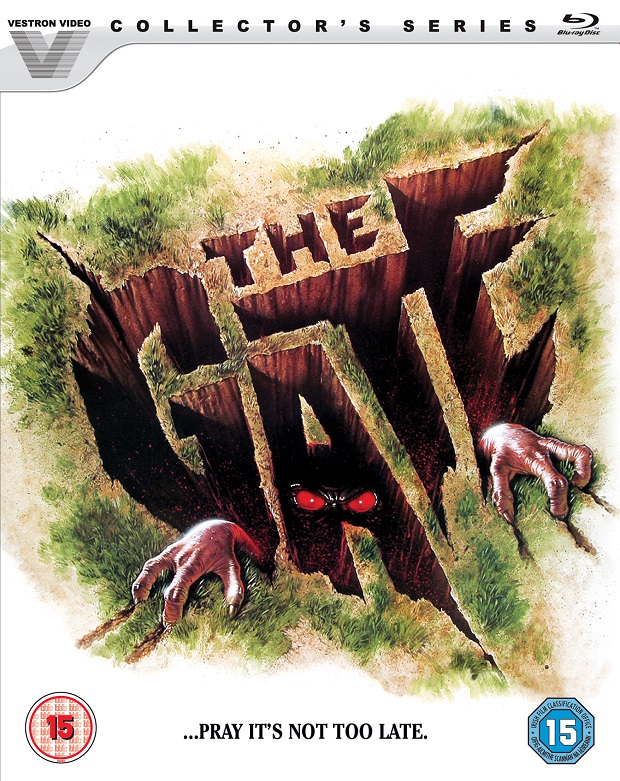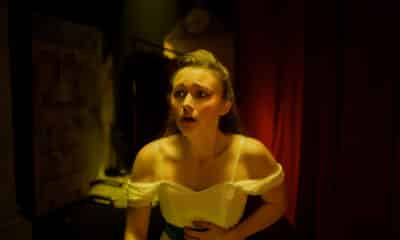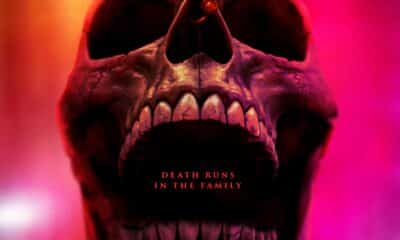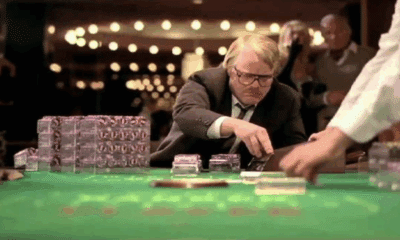
At the tail end of last year, Lionsgate UK released a wave of restored horror films from the bowels of Vestron Video. Vestron Video was a pioneer in home entertainment and was one of the leaders in the VHS craze of the eighties. They released an abundance of cult horror classics during their time and, though once thought lost forever to tape, some of their key titles have now been resurrected for the blu-ray generation. The first wave of releases included fully restored blu-ray conversions of Blood Diner, C.H.U.D II: Bud the Chud, Return of the Living Dead 3 and Waxwork. Today sees the release of a whole new set of movies: The Gate, The Lair of the White Worm and Wishmaster.
Available for the first time ever on blu-ray, the discs contain not only the cult films themselves, but a plethora of special materials. These range from audio commentaries, to original trailers and making of documentaries, as well as newly filmed interviews with the cast and crew as they are today. We were lucky enough to get hold of some advance copies of the discs; here’s a run down on what you can expect on each one.
The Gate

First up is The Gate. Originally released in 1987, The Gate stars a very young Stephen Dorff (of Blade fame) as Glen, a young boy whom, along with his best friend Terry (Louis Tripp), accidentally unearths a demonic evil and its minions. The boys, along with Glen’s older sister and babysitter Al (Christa Denton), subsequently battle to send the creatures back from whence they came.
Essentially, The Gate is a horror version of Home Alone, and with the addition of Al’s bratty friends (one of whom is played by The OC‘s Kelly Rowan), there’s a nice amount of humour to balance out the scares. Full of that kitsch eighties vibe, with elements of The Goonies and Gremlins, The Gate at times feels very childish, though the gore count ups the rating to a non-child friendly 15 certificate.
The Gate is best remembered for its wondrous practical effects, with the bulk of the bonus content honing in on this area. Special Effects Designer & Supervisor, Randall Cook, features on not one, but two audio commentaries; the first alongside director Tibor Takacs and writer Michael Nankin, the second is a special effects only affair with Special Make-Up Effects artist Craig Reardon, Special Effects Artist Frank Carere and Matte Photgrapher Bill Taylor joining Cook. Both are insightful and interesting commentaries, though with Cook involved in both, there is some crossover in the special effects talk. There’s also an original ‘Making of The Gate’ documentary in all its 4:3 glory to enjoy, which again focuses heavily on the effects. Then there are several featurettes and interviews with the artists today (Minion Maker, From Hell it Came, From Hell: The Creatures & Demons of The Gate) that cover off any area that might have been missed elsewhere.
Also featured is ‘The Gate: Unlocked’, a thirty minute interview with director Tibor Takacs and writer Michael Nankin, whom talk through the journey from script to screen. There’s also an interview with Carl Kraines (who plays The Workman), several cast and crew members who hail from Canada (where the movie was filmed), and an audio interview with Composer Michael Hoenig. This interview plays like the audio description alongside the film, and also features the isolated score. Frustratingly though you don’t get the interview around the score, instead you get the interview, and then once that is over, the score. This of course means that the score you’re hearing has nothing to do with what you’re seeing on screen. It’s a little distracting and might have worked better as two separate pieces set to images or something similar.
To complete everything there is also a bundle of original trailers (teaser, theatrical and TV spots), a storyboard gallery and a behind-the-scenes gallery. Sadly, despite all these extras, not one of the them includes Stephen Dorff, either as a child or adult. Given that this is one of the main draws for some, it’s a shame that he wasn’t available to sit down and discuss the cult favourite.
The Lair of the White Worm

The second release is the very British The Lair of the White Worm. Adapted from Bram Stoker’s final tale of fiction, and directed by Ken Russell (The Devil’s, Tommy), the film stars some very familiar faces – Hugh Grant, Amanda Donohoe and Peter Capaldi – when they were still fresh-faced and new to the world of acting. The story is set in modern (for the time), rural England, and not Stoker’s time period, so those expecting a faithful adaptation of his work be warned. The Lair of the White Worm instead uses Stoker’s work as a starting point and ventures into some very surreal places.
James D’Ampton (Grant) returns to his country castle in England. Legend has it that James’s distant ancestor once slayed the local dragon — a monstrous white worm with a fondness for the sweet flesh of virgins. The young lord dismisses the legend as folklore, that is until archaeology student Angus Flint (Capaldi) explores James’s property and unearths a massive reptilian skull and a pagan snake god’s ancient site of worship. When James’s virtuous girlfriend, Eve, suddenly disappears, James and Angus set out to investigate the foreboding cavern said to be the worm’s lair, where a centuries-old mystery begins to uncoil.
Despite starring Hugh Grant and Peter Capaldi (in a kilt), it is Amanda Donohoe that steals the film. She stars as Lady Slyvia Marsh, our seductress snake-vampire villainess, who brings a wry humour and a bounty of sensuality to the film. Even when painted head-to-toe in blue body paint, and fitted with giant reptilian teeth, she manages to be breath-takingly alluring. Part Emmerdale Farm, part Gothic horror, part hammer horrorm with a smattering of Carry-on film humour, The Lair of the White Worm is a camp, kitsch, wildly surreal viewing experience.
Unlike The Gate, there isn’t quite as much in the way of bonus content. Like The Gate, there are two audio commentaries, one with the late Ken Russell (presumably the same one featured on the 2007 DVD), and one which is more of an ‘in conversation’ with Lisi Russell, and film historian Matthew Melia. The pair don’t directly reference what is going on on-screen so it’s more of a recorded in-depth study of the film played over the top. Then there are several featurettes (Worm Food, Cutting for Ken, and Mary, Mary) which include interviews with the special effects teams, editor Peter Davies, and actor Sammi Davis (who plays Mary). Rounding things off are original trailers and a stills gallery.
Wishmaster

The third and final release in this second wave of Vestron titles is the 1997 film, Wishmaster. One the later ventures for Vestron Video, Wishmaster told the tale of an evil Djinn, an ancient entity who can grant a person’s wildest dreams, but in doing so unleashes your darkest nightmares. A modern (for the time) tale warning of the age-old adage of being careful what you wish for.
Horror legend Wes Craven served as executive producer on the project, and horror icons Robert Englund, Kane Hodder and Tony Todd all make fleeting appearances on-screen. With such high calibre of genre names attached, Wishmaster should be amazing. Instead it’s rather mundane. It starts well enough, with a Hellraiser-esque moment, but soon dissolves into expected horror trope, after horror trope, before an ending that renders the entire movie defunct and unnecessary. Potentially a product of it’s time – this type of horror film started to flag in the mid-nineties, being replaced by slasher flicks Scream and I Know What You Did Last Summer – Wishmaster could have, and should have been, so much better.
That being said, horror completists will find a lot to enjoy on the special features side of the disc. The featurette ‘Wish List’ is the stand-out as it features interviews with Robert Englund, Kane Hodder and Ted Raimi. More featurettes include interviews with director Robert Kurtzman, write Peter Atkins (who openly admits it’s not the greatest thing he’s ever written), co-producer David Tripet, cast members Andrew Divoff and Tammy Lauren, and director of photography Jacques Haitkin. It’s a lot of talking heads, but contains plenty of behind-the-scenes insights.
Speaking of behind-the-scenes insights, the disc also includes a compilation of behind-the-scene videos that really should have been kept off of the disc. It does little to add value and just looks cheap and dated. A vintage making-of also detracts from the more in-depth modern set of interviews, and the 4:3 nature combined with not the best picture quality, makes it feel like you are watching a VHS.
Other extras include the standard Vestron collection audio commentaries (one with Director Robert Kurtzman and Screenwriter Peter Atkins, one with Director Robert Kurtzman and his stars Andrew Divoff and Tammy Lauren), and another one of those peculiar isolated score and interview, this time with Wishmaster composer Harry Manfredini. In addition to the trailers (teasers, theatrical and TV spots), storyboard and stills gallery, Wishmaster also includes the original radio spots and a vintage EPK (Electronic Press Kit) which is really more of a promo, meaning that this disc has every scrap of marketing materials available.
Collect the latest batch of the Vestron Collection: The Gate, The Lair of the White Worm and Wishmaster on blu-ray from February 26th 2018.
Kat Hughes is a UK born film critic and interviewer who has a passion for horror films. An editor for THN, Kat is also a Rotten Tomatoes Approved Critic. She has bylines with Dread Central, Arrow Video, Film Stories, and Certified Forgotten and has had essays published in home entertainment releases by Vinegar Syndrome, Arrow and Second Sight. When not writing about horror, Kat hosts micro podcast Movies with Mummy along with her six-year-old daughter.

Latest Posts
-


Film Reviews
/ 1 day ago‘Fear Street: Prom Queen’ review: Dir. Matt Palmer (2025)
It has been four years since Leigh Janiak’s Fear Street trilogy took horror fans...
By Kat Hughes -


Film Reviews
/ 1 day ago‘The Surrender’ review: Dir. Julia Max (2025)
As Julia Max’s debut feature, The Surrender, unfolds, the inspirations for the film become...
By Kat Hughes -


Film Trailers
/ 3 days agoFirst trailer for Darren Aronofsky’s ‘Caught Stealing’
Sony Pictures has released the debut trailer for Darren Aronofsky’s new film Caught Stealing,...
By Paul Heath -


Film Reviews
/ 4 days ago‘Lilo and Stitch’ review: Dir. Dean Fleischer Camp (2025)
Director Dean Fleischer Camp won audiences over with the fantastic Marcel the Shell with...
By Kat Hughes




